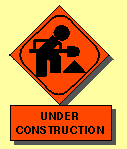

| Pages 1-9 of ___39____ pages. | Affiant's initials _________ |
| Page 10 of ___39____ pages. | Affiant's initials _________ |
| Page 11 of ___39____ pages. | Affiant's initials _________ |
| Page 12 of ___39____ pages. | Affiant's initials _________ |

| Pages 12-39 of ___39____ pages. | Affiant's initials _________ |